#speculativebiology
Text
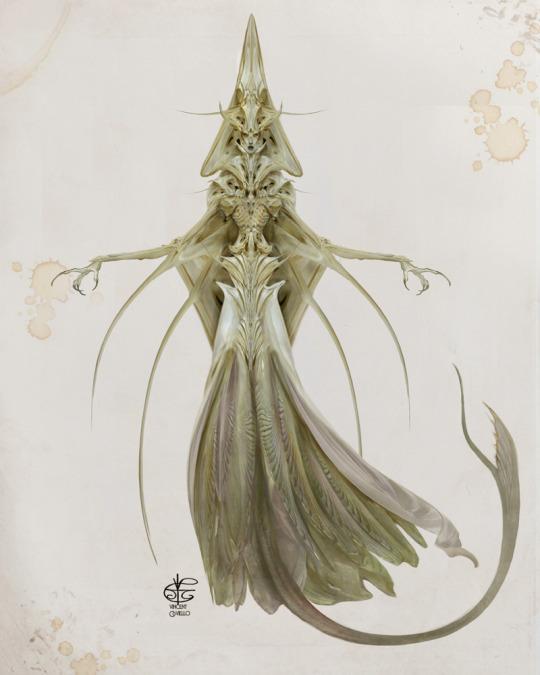
Wrapping up the spooky season mermaids with the "Skeletal Skate-maid." I'm sure nobody is surprised to hear, I thoroughly enjoyed this prompt. I hope you enjoyed the haunted merfolk as much as I did.
#mermayoctober2023#mermay#halloweenmermaid#halloween#mermaid#mermay2023#creaturedesign#conceptart#conceptdesign#bestiary#seacreature#monstergram#artistoninstagram#mythology#fantasyart#illustration#digitalart#speculativebiology#horror#macabre
1K notes
·
View notes
Text
Chicon 8
I'm going to be "at" the virtual Chicon worldcon in two weeks! If you're planning to be there too, come find me.
Here's my schedule:
The Biology of Fantasy Creatures (panel)
Friday September 2nd at 11:30am CDT Airmeet 1
Building a Better Monster (speculative evolution workshop)
Saturday September 3rd at 8:30am CDT Airmeet 1
Reading
Saturday September 3rd at 11am CDT Airmeet Readings
Virtual Table Talk
Sunday September 4th at 11:30 AM CDT Airmeet Table Talks
What Will the Aliens Look Like? (panel)
Monday September 5th at 11:30 am CDT Airmeet 2

#worldbuilding#danielmbensen#books#sciencefiction#aliens#speculativebiology#speculative evolution#chicagoworldcon
20 notes
·
View notes
Text

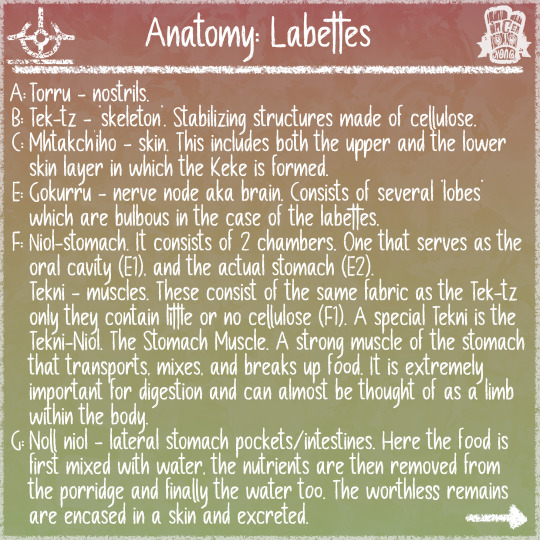

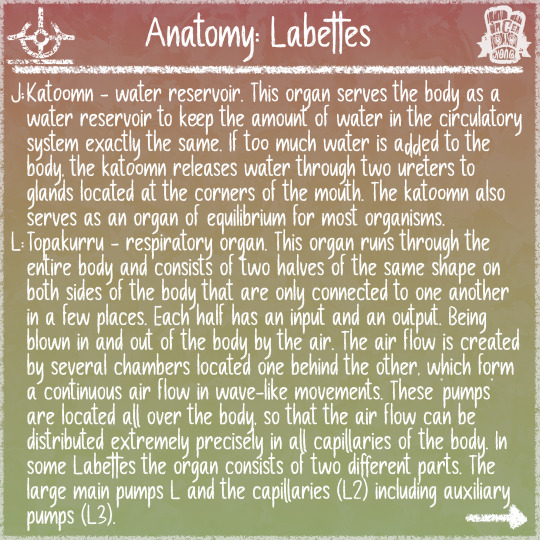
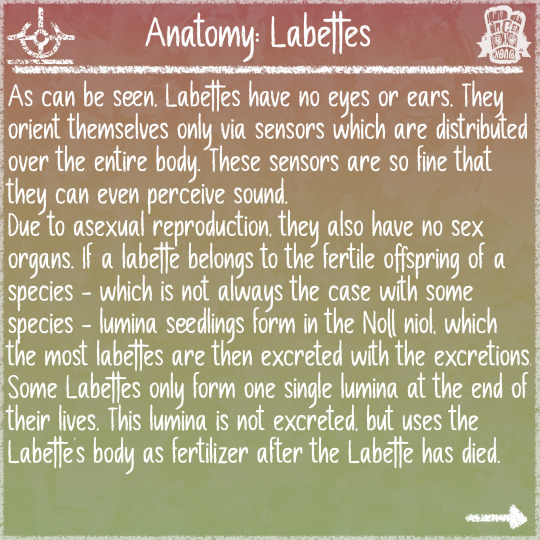

#worldbuilding#worldbuildingart#specevo#sciencefiction#alien#astrobiology#speculativeevolution#extraterrestrial#conceptartwork#speculativebiology#art#alienplanet#illustration#digitalart#creaturedesign#characterdesign#bookillustration#creature#nature#originalart#scifi#scifiart#conceptart#characterart#drawing#digitaldrawing#artist#comic#design#biology
2 notes
·
View notes
Text
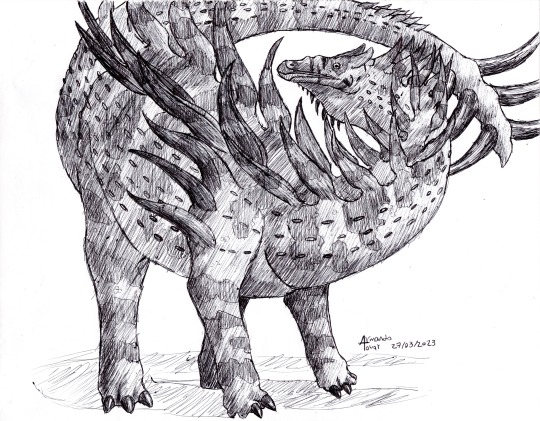
Fictional Stegosaurian:
A fictional species of stegosaurian dinosaur. I based its feet on this picture: https://www.deviantart.com/andorou-khan/art/Stegosaurian-Feet-391845603
...............
Estegosauriano Ficticio:
Una especie ficticia de dinosaurio estegosauriano. Basé sus pies en esta imagen: https://www.deviantart.com/andorou-khan/art/Stegosaurian-Feet-391845603
#stegosauria#ballpointpen#ballpointpendrawing#dinosaur#sciencefiction#sciencefictionfantasy#dinosaurdrawing#ballpointpenart#dinosaurart#speculativeevolution#speculativebiology#fictionalspecies
1 note
·
View note
Text
HOMO THEROPS: THE ANTHROS
(NOTE: descriptions copy-pasted from DA where i normally/originally post my works. any context that is missing here on tumblr can be found on my DA [linked here and on pinned post] )
[also, this right here is my updated version of them]
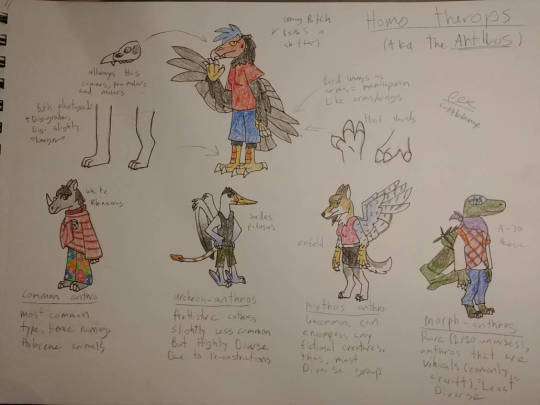
well well well if it isn't the updated version of this post back during the "strangeworld stories" era. and Vee's here too being a smug bitch cause she's actually a shapeshifter (But i figured i'd use her again for it anyways, considering i used her for the first one).
[tumblr note: don't worry, we'll eventually get my sona's species sometime in the future]
anyways, it's high time i once more talk about the "anthros". now, there are many races of anthropomorphic beings out there, but the term "anthro" refers specifically to these guys.
going by the scientific name "homo therops" (beast-faced man), as well as on occasion being dubbed "true anthros", these anthropomorphic beings are by far the most common humanoid anthropomorphic beings in the omniverse. they all come from/originate from various versions of earth, and in terms of earth-based sophonts they're also the most common. as a matter of fact, they're the 2nd most common earth-based race, sitting between humans (the 1st most common) and dinosauroids (3rd).
in spite of their appearances, anthros are actually a species of human that take up the physical appearance of anthropomorphic beings. they are mammals, does the whole "live birth + milk" stuff, have the near-identical anatomy and biology of a human, etc.. it's considered a big mystery as to how humans naturally evolved to look like "beasts".
in the majority of anthro universes, they walked alongside -and outcompeted- other well-known species of humans like neanderthals and us homo sapien. however, there are also plenty of universes where they continue to exist alongside at least one other species of humans (commonly us homo sapiens). strangely, only 2% of all anthro universes pull the "role reversal" and have humans be more or less animals (then again the "role-reversal" trope is more common in uplifted animals and other non-human sophonts).
before going into the types of anthros, we must talk about some of the features that they all have, because sometimes these features are what can separate them from near-identical-looking anthropomorphic beings.
-their skulls always contain canines, premolars and molars. in beaked individuals (like vee who is a turkey vulture), the beak tip replaces the incisors.
-they have both plantigrade & digitigrade legs, but digitigrade isn't too defined. the foot (or more specifically the metacarpal) is only about 50-65% longer than a regular plantigrade foot, depending on the specific animal. so, no extreme digitigrade legs. it also helps to know that, regardless of leg/foot orientation, they'll have the same amount of toes as their animal counterparts.
-anthros always will have at least three digits on their hands, in the form of a thumb and two fingers. this extends to hoof-hands; because instead of having strait-up hooves, they have three fingers that end in thick, hoof-like fingernails. note that the whole "three digit minimum" could also apply to other animals.
-avian arm wings are more like that of maniraptorans dinosaur. any paleonerd would know that maniraptoran dinosaur (and especially dromaeosaurs), tend to have a weird wing-like arms (or vise versa), were under the actually wing part is a hand. this applies to true anthros; although definitely having a wing-like structure with the feather coverage, they still have a humanoid hand underneath. depending on the specific anthro sub-category, these arm-wings (or any other wings) may or may not be capable of flight.
-and yes, like said before, they are biologically mammals (and humans, no less), and thus have said biological functions. this include reproductive organs, live births, and breast-feeding their young. and, like said, this is regardless of what they outwardly are. as a matter of fact, they also are always "human-sized", with little correlation to their species's size; another indicator of a true anthro.
-full-on invertebrates are not included. usually this is because invertebrate anthros evolved from...well...an invertebrate. this specifically refers to anthros who are mostly invertebrates; anthro who have minor invertebrate features (antenna, wings, maybe a tail, etc) do exist with the mythos anthros, thought even then they still are a vertebrate animal at their very core (example: mantacores are still mostly lion, but often have a scorpion tail).
did i get everything down? yes? good, now i can actually go through all the different type of anthros.
now, when it comes to classifying anthros and all that, one thing to note is that it's not based on what species of creature they are/represent, but rather the overall theme of said species. with that, there are four major groups that all anthros are categorized as:
COMMON ANTHROS
(ex. used: white rhinoceros)
common anthros are categorized as being anthros who's species are that of "Modern, holocene-era animals". they come from world that, for all intensive purposes, is identical to our own in terms of fauna and flora (no weird spec-evo stuff for the most part). as their name implies, they are by far the most common of the anthros, with 47% of all anthro universes being common anthros. actually, they're not just the most common; they were the FIRST anthros that the pukanis encountered, hence why they're used as the basis for classifying anthros.
in the common anthro's universes, it is a perfect 50/50 split between the common anthros being the only species of humans and anthro coexisting with other human species (commonly homo sapiens themselves).
ARCHEON-ANTHROS
(ex. used: sordes pilosus)
archeon anthros follow a somewhat similar pattern to the common anthro, the archeon anthros are species who are classified as "pre-holocene animals", which is to say any prehistoric animals/paleofauna. sometimes the species themselves focus on a specific time period, other times it seems like a free-for-all and different species of different time periods exist. whilst consisting 25% of all anthro universe, they are a very diverse due to the fact that they represent not just various paleofauna, but also the various reconstructions and physicals depictions of said paleofauna (which means yes, your scientifically accurate raptors and Jurassic park raptors can exist together).
sometimes regular, non-anthro/non-sapien paleofauna exist alongside them, though like all true anthros the archeon anthros still are humans biologically/taxonomically. this group is the most likely to have other species of humans living alongside them, and often have have several prehistoric human species coexist together alongside them.
MYTHOS ANTHROS
(ex used: enfield)
mythos anthro are by far the most varied of all anthros. whilst commonly representing mythological/folkloric creatures of our world, they also represent any fictional creatures of our world as well. this make the by far the most diverse of all anthro categories; you can have dragons and griffons, jersey devils and mothmen, or even a pokemon or digimon. this category is often a free-for-all; anything fictional creatures that exist, chances are exist as true anthros as well.
like with the archeon anthros, regular non-anthro counterparts and humans often coexist with said anthros. anthros based on media will often exist within some version of that media's universe (ie pokemon anthros existing in the pokemon universe).
MORPH-ANTHROS
(ex. used: A-20 havoc)
morph anthro consist of only 10% of all anthro universes. they represent not animals or living creatures, but instead vehicles. the "morph" part of the name is in reference to how human call their humanoid vehicles (aeromorphs, automorphs, etc). they are often considered the "least diverse" of all anthro universes, mainly because 50% of all morph-anthro's universe tend to only consist of aircraft (aeromorphs). still, they are nonetheless a very intriguing category.
of all anthro universes, these universes are the least likely to have other human species coexist with them. as a matter of fact, you are more likely to come across a multi-vehicle world than you are to come across a human-vehicle coexistence world. however, morph-anthros are also known to exist in the most different types of anthro universes; from our regular world, to a world of paleofauna and/or mythical beings, to human media-based universes; anyplace that's earth and has humans, chances are at least one version will have morph-anthros instead of any other human species.
aaaaaand some fun trivia facts because why not!!!
-when it comes to "flying anthro" and actual flight, it can vary depending on the universe they originate from. in some universes, they are completely incapable of flight due to their wings being too small. in other, their wings are large/powerful enough fly, or at least large enough to glide.
-anthro, strangely, hold the key to reversing transforgee's transformations, and anthros who find themselves tranforgees are way more likely to be fully cured than, say, a human or elkinet. this is why semi-reversal turns the tranforgee into a similar-sized anthro version of whatever they turned into.
-and here's an unfun fact: yes, regardless of type anthro can produce offspring with other compatible humans, and especially with the most populace of humans: homo sapiens. surprisingly the offspring isn't some misshapen, barely-functioning monstrocity; on the codagian anthropomorphism scale, they range between a mini-hybrid to just below that of a "true anthro", though that's just a generalization. for example, between a winged cat anthro and a human, you might get a winged catgirl, unintentionally get a mythical sphinx, a human with some animal-like features (muzzle, ears and tails are common with this particular one), etc.. yet another thing i just have to draw someday.
-and yes, there are worlds were all four anthro types coexist with eachother. beyond interdimensional travels to other worlds, there exist many terraformed planet that were specifically created and/or designed by true anthros with the aid of the pukanis.
#anthro#enfield#furry#pterosaur#rhino#aeromorph#furryanthro#speculativeevolution#speculativebiology#speculativezoology#elkinet#planet argonus#argonus#anthro airplane#anthro plane
0 notes
Text
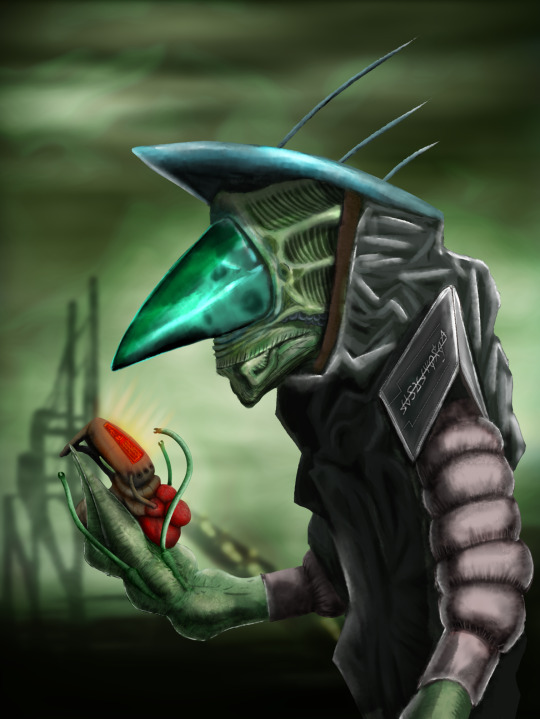
A Vwacha engineer acts as supervisor over the slave larva that constructs the launch pad for the latest in Vwacha spacecraft technology. This is not a mission of discovery. It is a slaughter.
1 note
·
View note
Photo





avatar
This may look like a screenshot but it's actually a digital drawing! Thanks @christian_cline for illustrating one of our favorite scenes from the teaser trailer 💙
Share your creations with the #AvatarFamily by using #NaviNationCreation.
christian_cline
A quick 35 minute master study I did of one of the clips from the very recent Avatar 2 trailer. It looks like some pretty cool stuff and I haven't done a study in a while, so I figured why not.
.
.
.
.
.
.
#sciencefiction#alien#alienlife#alienplanet#worldbuilding#avatarthewayofwater#creaturedesign#studies#extraterrestrial#illustration#avatar2#digitalillustration#artistsoninstagram#xenobiology#exobiology#avatarfanart#speculativeevolution#speculativebiology#art#conceptart
35 notes
·
View notes
Text
No way my speculative creatures didn’t get taken down when I posted them to r/speculativebiology!!! Win!!
4 notes
·
View notes
Text
Winged Favorite Foods and Aggriculture - Humans are Weird: Let's Work It Out
#Shorts #aliens #humansarespaceorcs #SpeculativeBiology #HFY
2 notes
·
View notes
Link
I did a short animation! This critter is a sort of Bowrabbit, which is a family of small slitmouths that fulfill similar niches to those of many small mammals, birds, and reptiles here on earth.
2 notes
·
View notes
Text

Mermay 2024 is quickly approaching but I’m not sure if I’ll be able to participate much this year. But to commemorate one of my favorite challenges of the year I give you the Great Winged Sirenia.
#concept art#creature design#fantasy art#creature concept#concept design#fantasy#monster#fairy#speculative biology#mermay#creaturedesign#conceptart#conceptdesign#bestiary#seacreature#monstergram#artistoninstagram#mythology#mermaid#fantasyart#illustration#digitalart#speculativebiology#sketch#magicthegathering#dungeonsanddragons#siren
389 notes
·
View notes
Video
youtube
The creatures of my alien planet Junction and how to turn speculative biology into a story.
https://youtu.be/dByLI0K4u4U?t=3675
https://docs.google.com/presentation/d/1WTaG42lbuF9Ii8liJFgqgCrVDpIk_J1NybBe1UQ7-6I/edit?usp=sharing
Many thanks to @draconesmundi, @raptorcivilization, and everyone at Specposium
#specposium#worldbuilding#danielmbensen#writing#books#sciencefiction#video#art#illustration#aliens#speculativebiology#creatureart#creaturedesign#specbio
19 notes
·
View notes
Text
Spec biology: typology, seminal works, references
A taxonomy of the main types of speculative biology for the benefit (I hope) of beginners, with examples of the earliest/most influential works and references hopefully useful to make your own. Full list below the cut; will be expanded over time. (Please contact me if a link is down; I’ll try to keep them updated.)
0a. General references: useful for any kind of specbio project. The Speculative Evolution Forum, Laws of Evolution (Pavel Volkov, 2005), Furahan Biology and Allied Matters (Gert van Dijk, 2008, ongoing), Spec Evo Wiki Tutorials (yours truly, ca. 2014; include planets, ecology, physiology, naming, &c), Chase for a Blue Chimera (Volkov & Kilyachkov, ca. 2015; general treatise on SpecBio) Worldbuilding Resources, Alien Biosphere Evolution (Phrenotopia, 2018, ongoing), The Equations of Life (Charles Cockell, 2018), Alien Biospheres (Biblaridion, 2019, ongoing), Exocosm (Abbydon, 2020, ongoing)
0b. Naming: Forming classical scientific names (Grensted & Bradley, 1958); Dictionary of Greek/Latin Roots (Donald Borror, 1960); Guide to Naming (me, ca. 2014); Guide to (Vernacular) Names (Dr Nitwhite, 2021), The Specposium Guide to Taxonomy (Henry Thomas, 2024), Common taxonomic affixes (Wiki)
0c. Planets and climate: Geoff’s Climate Cookbook (2006), Worldbuilding Videos (Artifexian, 2014, ongoing), Worldbuilding (Winchell Cheung), Worldbuilding Pasta (2019, ongoing)
Online textbooks on Biology, Chemistry, Geosciences, Astronomy; list of Biological Strategies
1. Future evolution: extending evolution into our future, imagining descendants of the species that live now on Earth; often the extinction of humanity is assumed to clear way to natural processes.
Key works: After Man (Dougal Dixon, 1981), The Future is Wild (multiple, 2002, TV; video), Neocene (Pavel Volkov, 2005), Demain: Les Animaux du Futur (Boulay & Steyer, 2015; original in French)
References: Future Evolution (Peter Ward, 2001), The Life and Death of Planet Earth (Ward & Brownlee, 2004), Our future Earth: how the planet will change in the next 100,000 years (Curt Stager, 2011), Supercontinent scenarios (EarthSky, 2019), Life Under a Dying Sun (me, 2020), Future of Earth (Wikipedia)
1a. Terraforming/seed world: Earth species brought onto another (usually empty) world, and let free to evolve naturally there.
Key works: Serina (Sheather, 2015)
1b. Posthuman evolution: future descendants of the human species, often involving artificial genetic manipulation.
Key works: Last and First Men (Olaf Stapledon, 1930), Man After Man (Dougal Dixon, 1990), All Tomorrows (C.M. Kosemen, 2006), Successors of Mankind (Pavel Volkov, 2018)
2. Alternative evolution: descendants of species from Earth's past, following a course of history alternative to our own.
Key Works: The Squamozoic (Darren Naish, 2013)
References: On sapient dinosaurs (multiple, since 1982)
2a. No-KT: the most popular type of alt-evo, assuming the survival of non-avian dinosaurs instead of their extinction at the end of the Cretaceous.
Key works: The New Dinosaurs (Dougal Dixon 1988), The Speculative Dinosaurs Project (multiple, 2001), Dinosauroids (Kosemen & Roy, 2008-19)
2b. Lost world: members of historically extinct or imaginary groups survive, and keep evolving, in isolated regions of Earth.
Key works: The Snouters (Gerolf Steiner, 1957), The World of Kong (Weta Workshop, 2005), Fragment (Warren Fahy, 2009), Diyu (Troll Man, 2014), R’lyeh (Troll Man, 2016)
2c. Spec paleontology: speculation about organisms that might have existed in Earth’s past (or hypothetical features of those that did).
Key works: All Yesterdays + All Your Yesterdays (Conway, Kosemen, Naish, 2012 and 2017)
References: The Silurian Hypothesis (Schmidt & Frank, 2018)
2d. Cryptid spec: giving a realistic and biologically plausible description of creatures from human myth, folklore, or fiction (Nessie, Bigfoot, and the like).
Key works: On the Track of Unknown Animals (Bernard Heuvelmans, 1955-95); Compendium of Dragonology (Dugald Steer, 2009), Cryptozoologicon (Conway, Kosemen, Naish, 2013)
3. Xenobiology: independent origin and evolution of life on worlds (planets, moons, &c) other than Earth.
Key works: Star Maker (Olaf Stapledon, 1937), Expedition (Wayne Barlowe, 1990; link in Russian) & Alien Planet (Discovery, 2005, TV), Epona (multiple, 1993), Natural History of an Alien (BBC, 1997, TV), Extraterrestrial part 1 & part 2 (National Geographic, 2005, TV), Sagan 4 (multiple, 2006), Snaiad (C. M. Kosemen, 2007), Furaha (Gert van Dijk, 2008, ongoing), Greenworld* (Dougal Dixon, 2010; only in Japanese!), Ilion (Emily Holland, 2012), The Museum of Alien Life (melodysheep, 2020)
References: Xenology (Robert Freitas, 1979), The Science of Aliens (Clifford Pickover, 1999), What Does a Martian Look Like? (Cohen & Stewart, 2002), Life in the Universe: Expectations and Constraints (Schulze-Makuch & Irwin, 2004), Plants under Alien Suns (Sol Company, 2007), Cosmic Biology (Schulze-Makuch & Irwin, 2010), Darwin’s Aliens (Levin & al, 2017), Superhabitable Worlds (multiple, 2020), The Biological Universe (Wallace Arthur, 2020), Habitats for Life in the Solar System (yours truly, 2020), The Zoologist’s Guide to the Galaxy (Arik Kershenbaum, 2020), Alien Bodies (Winchell Chung, updated 2021)
3a. Alternative biochemistry (many refs in the previous point also address it)
References: Life Beyond Earth (Feinberg & Shapiro, 1980), Many Chemistries Could Be Used to Build Living Systems (W. Bains, 2004), The Limits of Organic Life in Planetary Systems (multiple, 2007), Alternative Biochemistries (thomastapir, 2009), Alternative Forms of Life (David Darling, 2016), Silicon as Building Block for Life (Petkowski &al 2020), Hypothetical Types of Biochemistry (Wikipedia)
3b. Spec planetology: focusing more on the planet itself (geology, geography, climate) than on the life that inhabits it.
Key works: Planetocopia (Chris Wayan, 2002)
References: Worldbuilder’s Cookbook (John McMullen, ca. 2005), Geoff’s Climate Cookbook (2006), Atmosphere and Climate of Terrestrial Exoplanets (Kaspi & Showman 2011), Worldbuilding (Winchell Cheung), Worldbuilding Pasta (2019, ongoing), Exocosm Exoplanetology (Abbydon, 2020, ongoing)
3c. Exotic xenobiology: organisms living on celestial bodies other than rocky planets or moons, often based on processes fundamentally different from Earth’s biochemistry.
Key works: Dragon’s Egg (Robert Forward, 1980)
References: Neutron Star Life (David Darling, 2016)
4. Alternate universes: development of life in worlds governed by different physical laws (e.g. fantasy settings).
References: Life in the Multiverse (Jenkins & Perez, 2010)
4a. Two-dimensional universes:
Key works: The Planiverse (A.K. Dewdney, 1984), Dichronauts (Greg Egan, 2017)
References: from above, Two Dimensional Science and Technology* (A.K. Dewdney, 1980), The Wonders of a Planiverse (Martin Gardner, 1980), Existence of Life in 2 + 1 Dimensions (J.H.C. Scargill, 2020)
4b. Sci-fantasy: evolution in worlds where a form of “magic” is present and detectable; often imagining species based on creatures from human myth or fiction.
4c. Portal universe: a self-contained world with its own physical laws colonized by organisms from our universe.
Key works: Sheatheria (Sheather, 2013)
5. Multiple types
Tangent Worlds (C.M. Kosemen, 2016)
Pavel Volkov’s general specbio link archive, Curious Archive
Astrovitae Magazine (since 2021)
A massive list of specbio projects online (by RustyyOnions)
Most of the unlinked books can be found either on LibGen. You can read in full the books in the Internet Archive by “borrowing” them from the virtual library if you register to the site (it’s free and you don’t need to provide anything but an email address; note that books can only be borrowed by one user at a time). The books marked with * are especially hard to find; please let me know if you find any copy.
... since we’re still here, I’ll take the chance to shill my DeviantArt gallery and my own projects: A Matter of Time (snapshots of future history, from the next decades to the end of the universe); Settlers from the Deep (Earth’s surface is sterilized by a solar flare and recolonized by aquatic and subterranean survivors); Tagra (a civilization of sapient dinosaurs inhabiting Antarctica just before it’s covered in ice); Gods of Salt (the “““real”““ history of human origins); Ea: Our Second Chance (life on an Earth-like planet colonized by ideologically fractious humans)
#speculative evolution#worldbuilding#reference#speculative biology#speculativeevolution#speculativebiology#my work#alternate evolution#alternate universe#future evolution
162 notes
·
View notes
Text

No exactamente un dinosaurio:
Yo quería hacer algo parecido a un rinoceronte y termine con algo que parece un ceratópsido de cuerpo ligero.
.......
Not exactly a dinosaur:
I wanted to do something resembling a rhino and ended up with something that looks like a light bodied ceratopsian.
#fantasy#fictionaldinosaur#ceratopsian#coloredpencil#coloredpencils#creature#dinosaur#fantasycreature#monster#originalspecies#speculativebiology#fictionalspecies
0 notes
Text
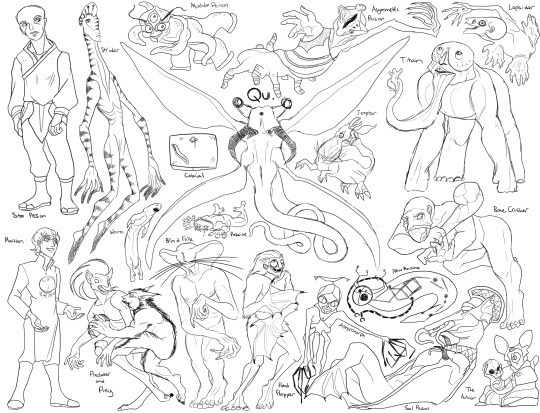
I'm going to take a break now lol
#cmkosemen#evolution#nemoramjet#speculativeevolution#speculativebiology#speculativezoology#alltomorrows#blursed
103 notes
·
View notes
Text

Something cute that grows in the ground as a baby but uproots and modifies it’s extremities into limbs in adulthood. They do some photosynthesis and are the size of large house cats. The limb layout ends up partially random, resulting in bifurcated limbs and curved bones, too.
215 notes
·
View notes